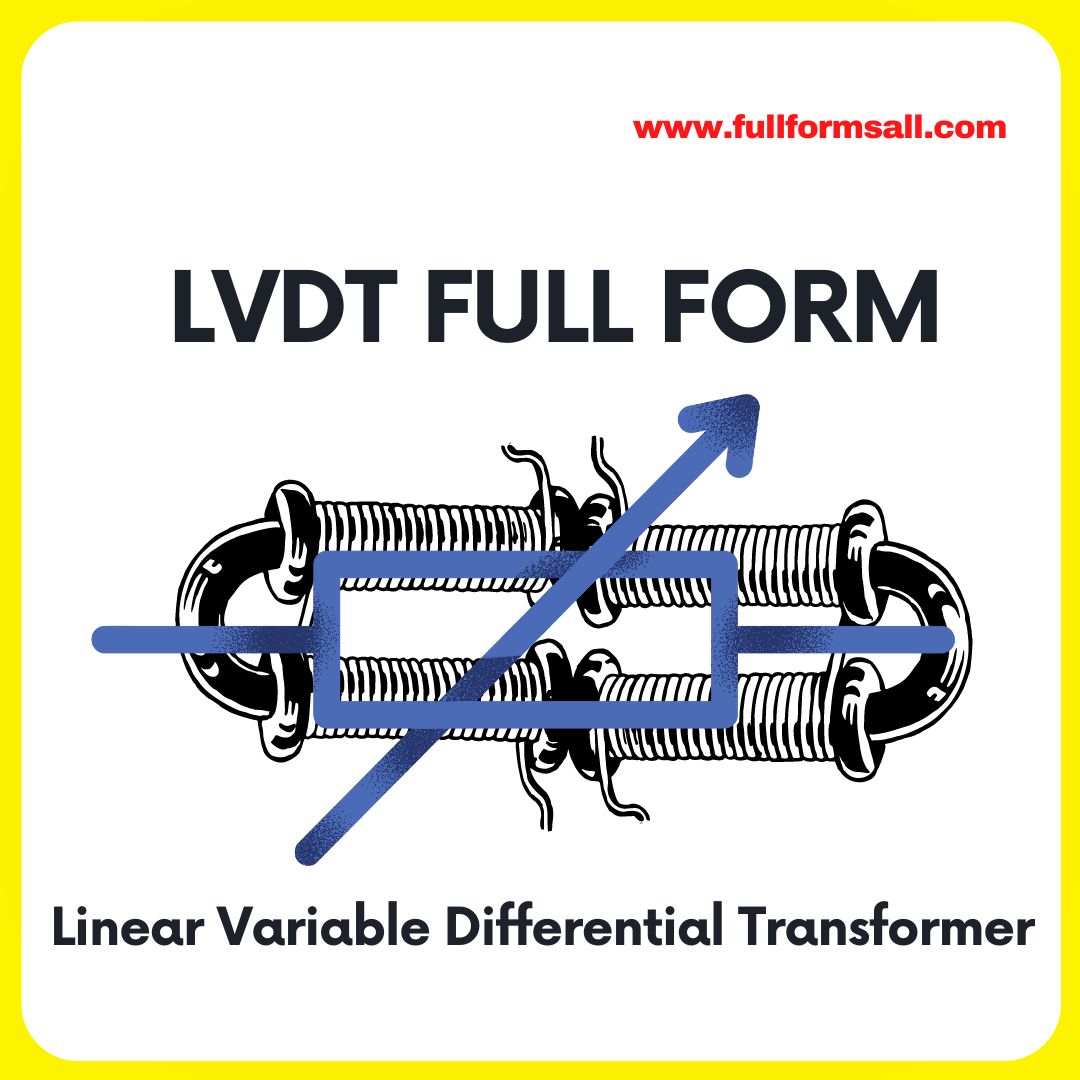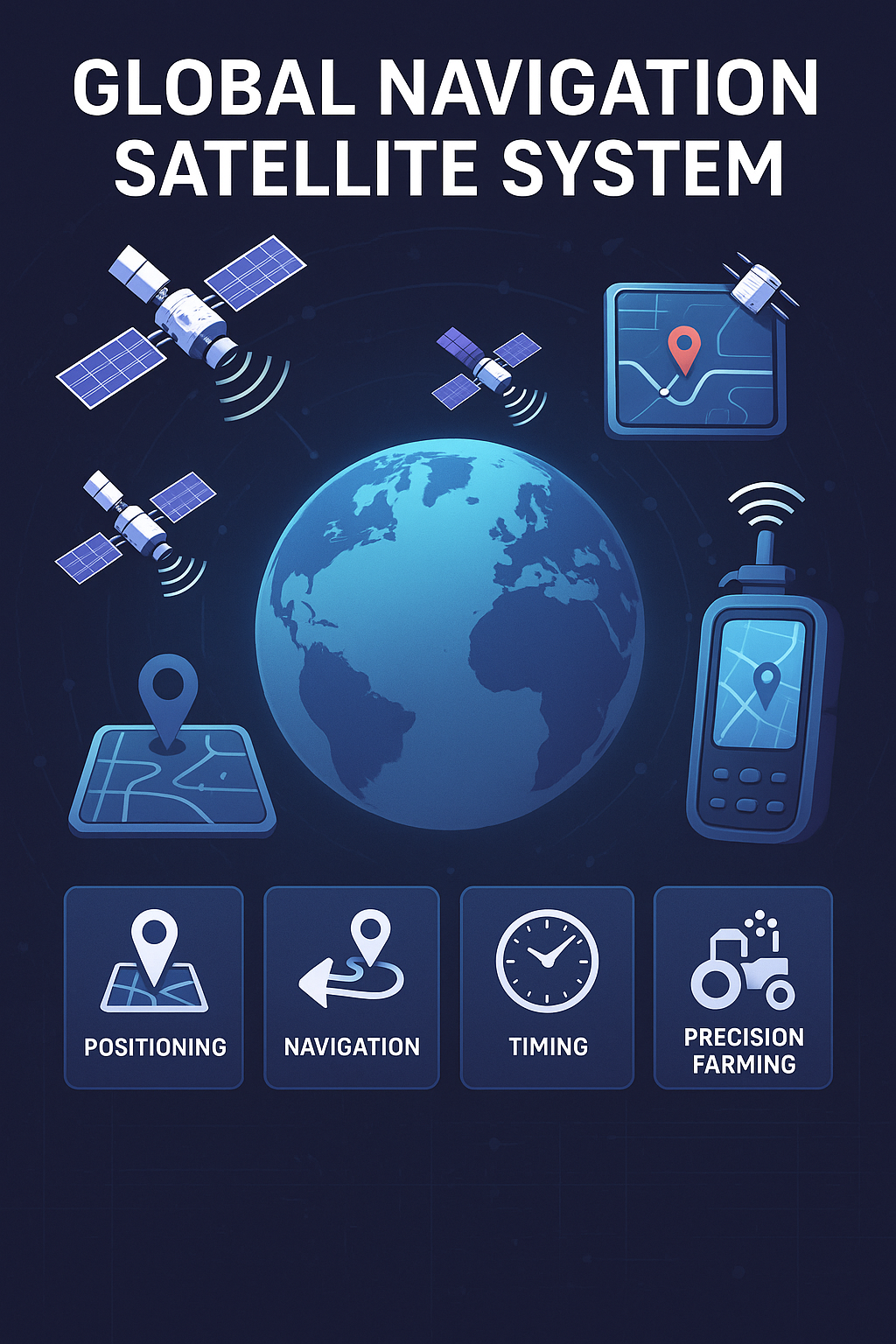In this article you get to know about LVDT full from and other different abbreviations of LVDT in various fields. LVDT full form refers to Linear Variable Differential Transformer.

A Linear Variable Differential Transformer is a type of sensor that is commonly used to measure linear displacement or position. It is a contactless sensing device that uses the principle of electromagnetic induction to convert the linear motion of an object into an electrical signal.
An LVDT consists of a cylindrical coil assembly and a movable ferromagnetic core. The coil assembly consists of three coils, arranged such that the central coil is the primary and the outer two coils are the secondaries. The ferromagnetic core is a movable rod that is placed inside the coil assembly. As the core moves linearly, it induces a voltage in the secondary coils that is proportional to its displacement.
The LVDT is a highly accurate and reliable sensor, with typical measurement resolutions on the order of micrometers. It is widely used in applications such as machine tools, robotics, aerospace, and automotive engineering, where precise position sensing is required. LVDTs can also be used in industrial automation and control systems, as well as in medical devices and scientific instruments.
The working principle of a Linear Variable Differential Transformer is based on the principle of electromagnetic induction. The LVDT consists of a cylindrical coil assembly and a movable ferromagnetic core. The coil assembly consists of three coils, arranged such that the central coil is the primary and the outer two coils are the secondary. The ferromagnetic core is a movable rod that is placed inside the coil assembly. When an AC voltage is applied to the primary coil, it generates a magnetic field that induces a voltage in the secondary coils. When the ferromagnetic core is in its central or null position, the induced voltage in the two secondary coils is equal and opposite, resulting in a net output voltage of zero. As the core moves linearly from its null position, the voltage induced in one secondary coil increases while the voltage induced in the other secondary coil decreases. This results in a net output voltage that is proportional to the displacement of the core.
The output voltage of an LVDT is typically a linear function of the displacement of the core over a specified range. The output voltage is also proportional to the amplitude and frequency of the input AC voltage. The amplitude and frequency of the input voltage can be controlled to achieve a specific sensitivity and resolution of the LVDT. LVDTs are highly accurate and reliable sensors that are widely used in various industries for measuring linear displacement and position.
An LVDT is a versatile sensor that is used to measure linear displacement or position. It has a wide range of applications in various industries, including:
Aerospace: LVDTs are used to measure the position of control surfaces, landing gear, and other critical components in aircraft and spacecraft.
Automotive: LVDTs are used in various automotive applications, such as suspension systems, engine control systems, and transmission systems.
Industrial automation: LVDTs are used in manufacturing and process control systems to measure the position of parts and components in machines, robots, and other automated systems.
Medical devices: LVDTs are used in medical devices such as MRI machines, CT scanners, and other diagnostic equipment to measure the position of patient tables, scanner beds, and other moving components.
Robotics: LVDTs are used in robotic systems for measuring the position and movement of robot arms, grippers, and other components.
Scientific instruments: LVDTs are used in scientific instruments such as telescopes, spectrometers, and other instruments that require precise linear position measurements.
Power generation: LVDTs are used in power generation applications such as hydroelectric dams, where they are used to measure the position of the wicket gates and other components.
Defense and military: LVDTs are used in military and defense applications such as missile guidance systems, targeting systems, and other applications that require precise linear position measurements.
Mining: LVDTs are used in mining applications such as monitoring the position of underground mining equipment, conveyor belts, and other components.
Civil engineering: LVDTs are used in civil engineering applications such as monitoring the movement and deformation of structures such as bridges, dams, and buildings.
Environmental monitoring: LVDTs are used in environmental monitoring applications such as monitoring water levels in rivers, lakes, and reservoirs.
Testing and calibration: LVDTs are used in testing and calibration applications such as calibration of other sensors, load cells, and other mechanical components.
Pneumatics and hydraulics: LVDTs are used in pneumatic and hydraulic systems to measure the position of cylinders, pistons, and other moving components.
Agriculture: LVDTs are used in agriculture applications such as monitoring the position of seeders, sprayers, and other equipment.
Food and beverage: LVDTs are used in food and beverage applications such as monitoring the position of packaging equipment, filling machines, and other components.
Packaging and labeling: LVDTs are used in packaging and labeling applications such as monitoring the position of labeling machines, filling machines, and other equipment.
Textile and printing: LVDTs are used in textile and printing applications such as monitoring the position of weaving machines, printing presses, and other equipment.
Research and development: LVDTs are used in research and development applications such as prototyping, product testing, and other scientific investigations that require precise linear position measurements.
LVDT’s are available in various sizes, ranging from miniature LVDTs to large LVDTs. The size of an LVDT depends on the application requirements, including the range of motion, linearity, and resolution. Here are some common LVDT sizes:
Miniature LVDTs: These are small-sized LVDTs that are typically less than 1 inch in length. They are used in applications that require precise linear position measurements in small spaces, such as medical devices, robotics, and scientific instruments.
Standard LVDTs: These are medium-sized LVDTs that are typically between 1 inch and 6 inches in length. They are commonly used in industrial automation, automotive, aerospace, and other applications where precise linear position measurements are required.
Large LVDTs: These are large-sized LVDTs that are typically longer than 6 inches in length. They are used in applications that require high displacement ranges, such as in civil engineering, mining, and power generation.
Custom LVDTs: LVDTs can also be custom-made to meet specific application requirements. They can be designed with various diameters, lengths, and stroke lengths to suit specific applications.
Overall, the size of an LVDT depends on the specific application requirements, and LVDT manufacturers offer a range of sizes to meet the needs of different industries and applications.
Different abbreviations of LVDT in various fields are as follows
| Term | Abbreviation | Category |
| LVDT | Linear Variable Differential Transformer | General |
| LVDT | Linear Voltage Differential Transformer | Science & Academic |
| LVDT | Linear Voltage Differential Transducer | Misc. & Others |
| LVDT | Linear Variable Displacement Transducer | Misc. & Others |
CONCLUSION:
Dear reader in this article you get to know about LVDT full from and LVDT term used in various other fields, If you have any query regarding this article kindly comment below.
